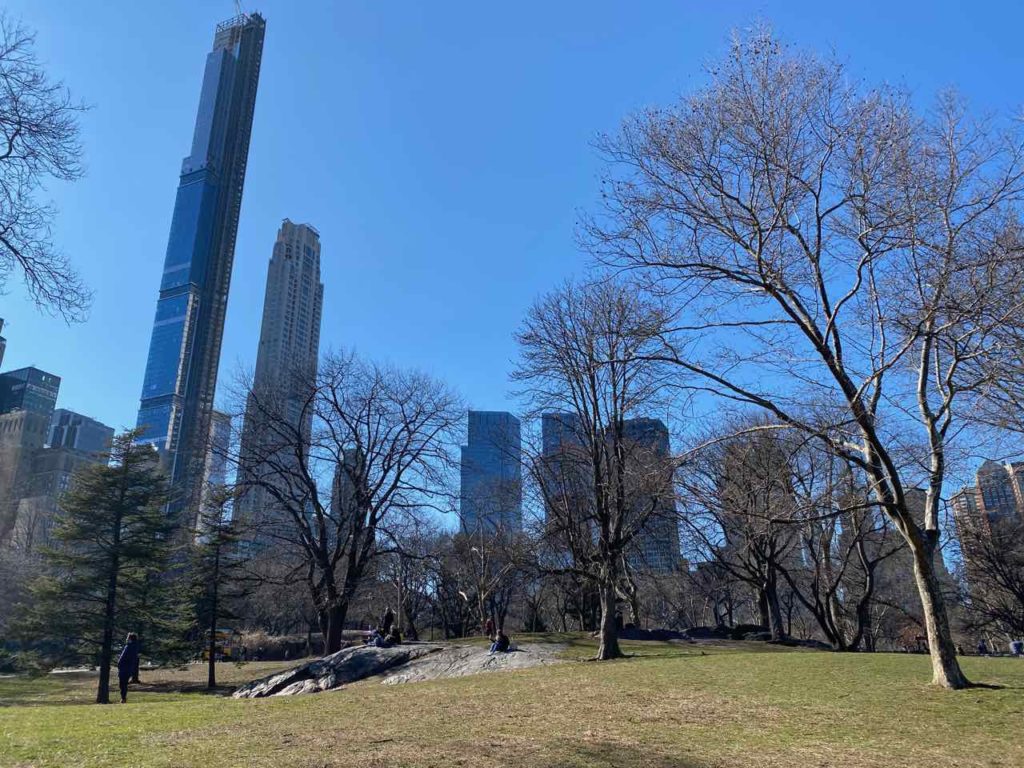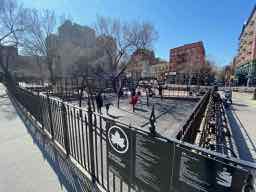
We just got back from a week-long trip and it was killer. We covered 73 miles on foot, averaging 10.4 miles per day. According to my Fitbit, we climbed 369 floors, or about 53 floors a day (for perspective, that’s just a few floors shy of the Bank of America Center in Charlotte). As outdoor adventures go, it was physically challenging: that New York City can really wear you out.
When we decided to spend a week in New York, my main goal (among many) was to visit Central Park. A half mile wide and two-and-a-half miles long, this 843-acre urban park is testament to what good city planning early on can accomplish. According to the Central Park Conservancy, which manages the park, about 38 million people visit the park each year, or, on average, 104,000 people every day.
When it was conceived in the 1840s, Central Park was seen as a way for New Yorkers to escape the crush of urban life. One of the key features of the Greensward Plan eventually chosen for the park was that it effectively shielded park-goers from the city that lay beyond its borders. (Ironically, this massive clearing is now one of the best spots to view the towering midtown Manhattan skyline.)

But, as I quickly discovered, it’s not just Central Park. That early success spawned a commitment to parks and their restorative powers: today, New York City has more than 1,700 parks across its five boroughs. In Manhattan, it seems, you can’t walk more than three blocks without hitting a park. Some are small pocket parks only big enough for a playground. Some are big enough to accommodate a game of touch football or Frisbee. In Central Park, you can train for a marathon. We wound up plotting our routes between main attractions — the New York Public Library, Grand Central Station, Greenwich Village, among others — by how many parks we could walk through along the way.
What helped us rack up our miles was being able to go carless. Every morning I walked a mile through our Brooklyn neighborhood to get coffee at a Russian market, then meander my way back. New York’s incredible public transit system took us close to everywhere we wanted to go: take a train to downtown Manhattan, walk five or six miles, take the train back.
And those 53 floors a day? Mostly from descending or ascending to catch a train. (And extra credit on our travel days, when we had about 60 pounds of luggage in tow.) Those trains and the buses, especially at rush hour, provide one of the best core workouts imaginable: you’re standing, the train is swaying and bucking at 30 mph — you better believe your core gets a workout. And, when our New York City days came to an end, we were rewarded with the best night’s sleep you can imagine.
When we returned in today’s wee hours after our 7-day NYC adventure I was spent. And I was glad to have a looming weekend to recover: just 21 miles backpacking the coast’s Neusiok Trail — with nary a stair or a hill in sight.